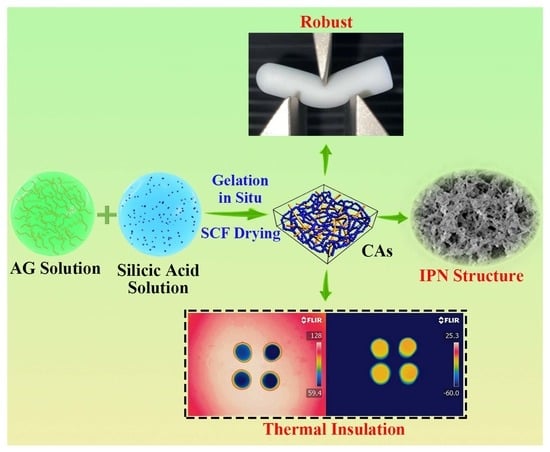Robust Silica–Agarose Composite Aerogels with Interpenetrating Network Structure by In Situ Sol–Gel Process
Abstract
Share and Cite
Yang, X.; Jiang, P.; Xiao, R.; Fu, R.; Liu, Y.; Ji, C.; Song, Q.; Miao, C.; Yu, H.; Gu, J.; et al. Robust Silica–Agarose Composite Aerogels with Interpenetrating Network Structure by In Situ Sol–Gel Process. Gels 2022, 8, 303. https://doi.org/10.3390/gels8050303
Yang X, Jiang P, Xiao R, Fu R, Liu Y, Ji C, Song Q, Miao C, Yu H, Gu J, et al. Robust Silica–Agarose Composite Aerogels with Interpenetrating Network Structure by In Situ Sol–Gel Process. Gels. 2022; 8(5):303. https://doi.org/10.3390/gels8050303
Chicago/Turabian StyleYang, Xin, Pengjie Jiang, Rui Xiao, Rui Fu, Yinghui Liu, Chao Ji, Qiqi Song, Changqing Miao, Hanqing Yu, Jie Gu, and et al. 2022. "Robust Silica–Agarose Composite Aerogels with Interpenetrating Network Structure by In Situ Sol–Gel Process" Gels 8, no. 5: 303. https://doi.org/10.3390/gels8050303
APA StyleYang, X., Jiang, P., Xiao, R., Fu, R., Liu, Y., Ji, C., Song, Q., Miao, C., Yu, H., Gu, J., Wang, Y., & Sai, H. (2022). Robust Silica–Agarose Composite Aerogels with Interpenetrating Network Structure by In Situ Sol–Gel Process. Gels, 8(5), 303. https://doi.org/10.3390/gels8050303







